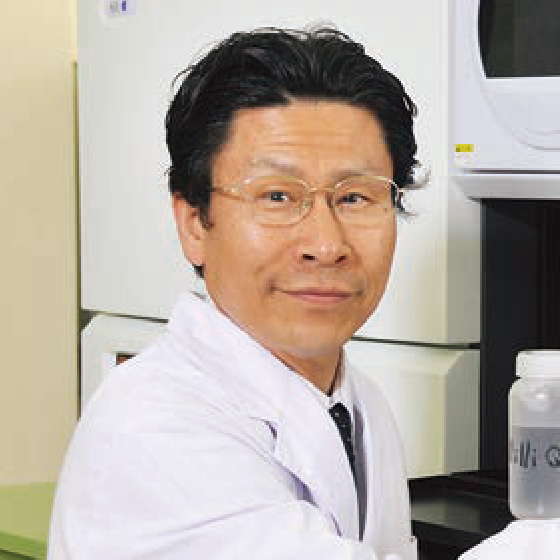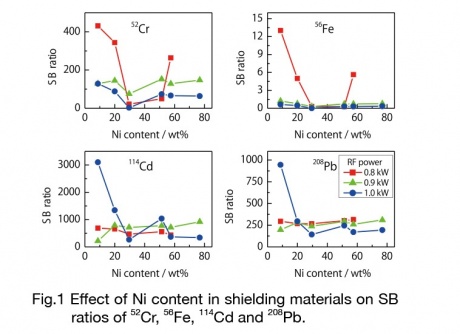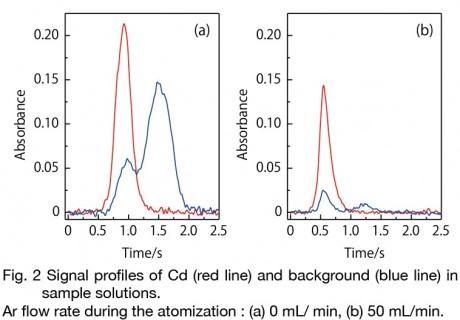- Home
- Faculty Members
- Department of Applied Chemistry and Food Science
- Tomokazu Tanaka
Faculty of Environmental and Information Sciences
Department of Applied Chemistry and Food Science
- Key words
- Environmental analysis, food analysis, environmental purification/ conservation, recycling

Doctor of Engineering / Professor
Tomokazu Tanaka
Education
Department of Chemistry, Faculty of Science and Engineering, Ritsumeikan University
Professional Background
Technical Official, Research Associate at Nagoya University, Assistant Professor, Professor at Fukui University of Technology, Director of Student and Educational Affairs Division
Consultations, Lectures, and Collaborative Research Themes
Technical development and technical consultation related to environmental analysis and food analysis,
Lectures on environmental problems, recycling and waste treatment
Main research themes and their characteristics
「Effect of materials used for an electrostatic shield on the sensitivity of ICP-MS」
Inductively coupled plasma mass spectrometry (ICP-MS) has extremely high sensitivity and is essential for the analysis of trace elements in various fields including environmental samples. However, molecular ions originated from argon (Ar) as the discharge gas of ICP and water as the solvent of the sample solution cause spectral interference, resulting in a significant decrease in sensitivity. Therefore, we examined materials used for an electrostatic shield to improve the sensitivity of ICP-MS. Since the previous research suggested that the nickel (Ni) content in the shield material is related, the Ni content in the shield material was systematically changed in the range of ca. 10 to 80 wt%. Nine kinds of materials (SUS304, nickel silver, kovar, constantan, 45-permalloy, hastelloy C-276, nichrome, Inconel-600, 78-permalloy) were selected, and the signal intensity of target elements and the intensity ratio of signal to background (BG) were measured. It was found that the material with a low Ni content such as SUS304 is suitable as the shield for ICP-MS regardless of the presence or absence of spectrum interference. The cool plasma state in which the high-frequency power was lowered was suitable when there was spectrum interference of molecular ions due to Ar etc., and the hot plasma state in which the high-frequency power was increased was suitable when there was no spectrum interference. A correlation was not always found between the Ni content in the shield material and the signal intensity of target elements, but it is suggested that this may be influenced by the contained elements other than Ni and the physical properties of the material itself.
「Sensitive analysis of harmful trace elements in food」
It is the main idea that the standard value for food pollutants should be set as low as possible within a reasonable range from the viewpoint of consumer health protection. This kind of safety-oriented concept is the same for pet food. In Japan, 11 kinds of chemical species are designated as pollutants by the Pet Food Safety Law, and 3 kinds of harmful elements (Cd, Pb, As) are contained in them. In this study, we focused on Cd (1μg/ g or less), which is the most strict regulation among the three elements, and attempted to determine trace Cd in a dry-type pet food by using a method combining pressure acid decomposition and graphite furnace atomic absorption spectrometry. Carbon soot generated from the remaining organic matter caused a large background absorption at the atomization in the graphite furnace. The background was effectively suppressed by flowing a small amount of argon, which is the purge gas to prevent exhaustion and deterioration of the graphite furnace, also during the atomization. The average of the quantitative values of Cd obtained by the three analytical operations was 0.85 μg/g and the relative standard deviation was 3.5%. The quantitative value decreased to ca. 70% only by raising the sample decomposition temperature by 10℃ from 155℃ to 165℃. This result showed that the careful consideration was required to set the conditions of the samples.
Major academic publications
T. tanaka, M. Fujita, D. Nomoto, “Effect of Nickel Content in Electrostatically Shielding Materials on the Sensitivity of ICP Mass Spectrometry”, Memoirs of Fukui University of Technology, No. 46 (2016), 169-173.
T. tanaka, et al., “Determination of Cadmium in a Pet Food by Pressure Acid Decomposition / Graphite Furnace Atomic Absorption Spectrometry”, Memoirs of Fukui University of Technology, No. 48 (2018), 70-74.
T. tanaka, Y. Ueda, “Analysis of Eluted Metals from Nonferrous-Metal Cookware Materials”, Memoirs of Fukui University of Technology, No. 49 (2019), 106-110.


